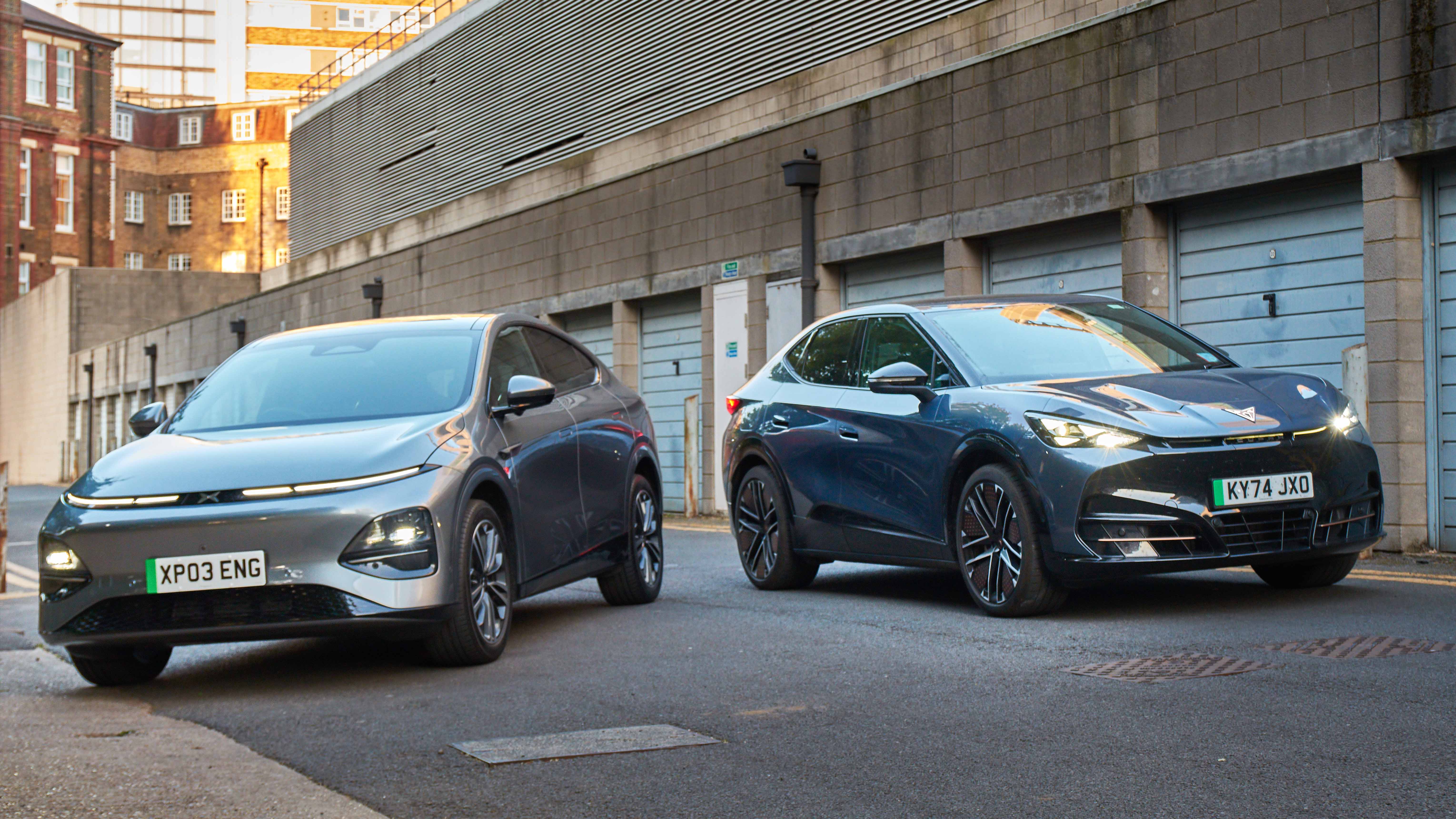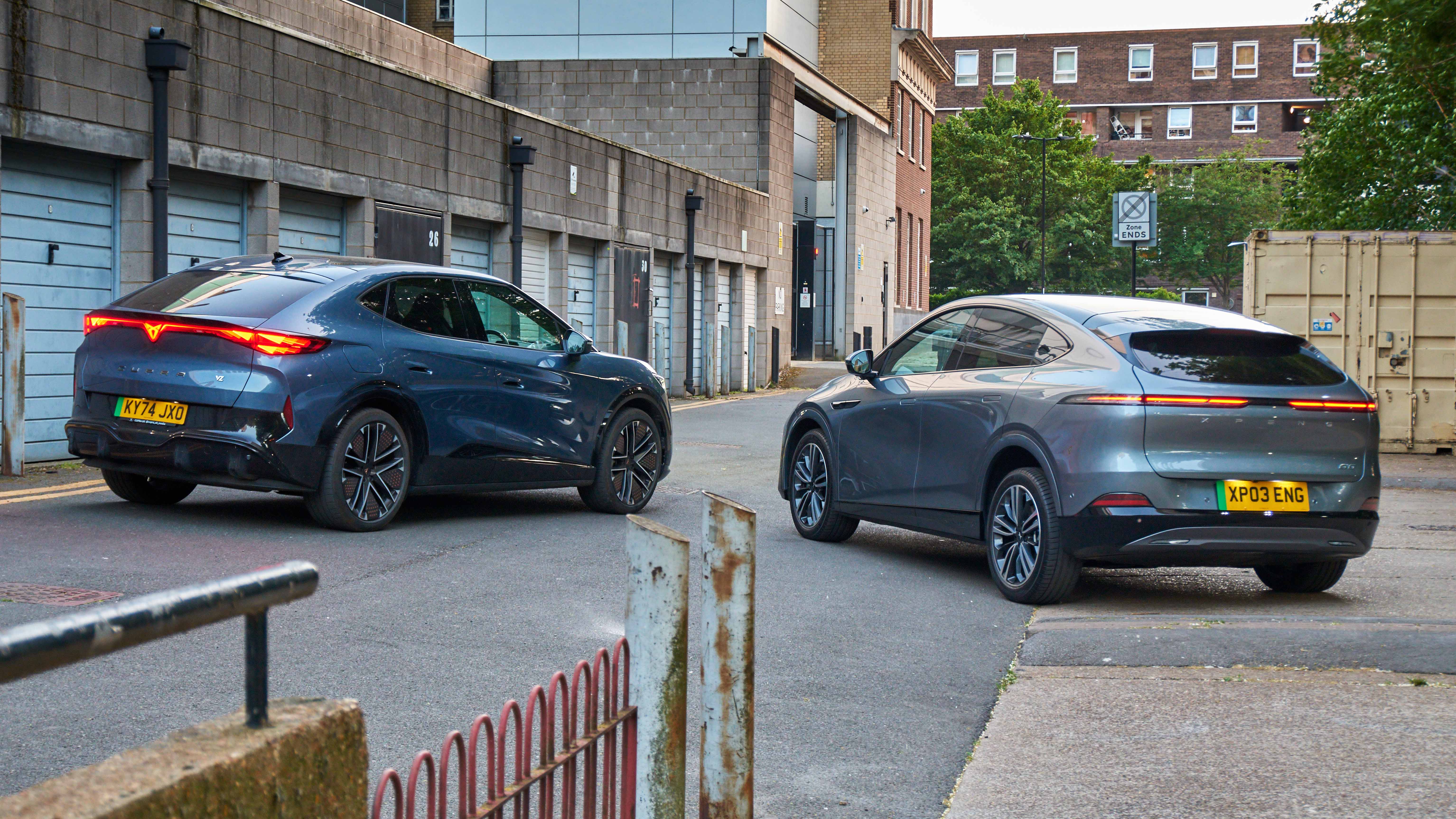
SPEC HIGHLIGHTS
- SPEC
Cupra Tavascan VZ2
- Range
298.9 miles
- ENGINE
1cc
- BHP
335.3bhp
- 0-62
5.5s
Oh no! The Cupra Tavascan VZ2 has been involved in a small accident
I haven't driven the Tavascan for six weeks. It's been in a bodyshop. I was sitting at a big traffic-light junction in London, three lanes in my direction. According to the giant arrows painted on the road, one's for left, one for ahead and one for ahead or right. I'm in the one for ahead or right, and I'm going ahead. The lights go green and the car to the left of me, in the ahead-only lane, goes right.
The result is only a shallow wound, maybe 5mm max, but it drags along the front wing, front door, rear door and rear wing. Plus the plastic arches and protection panels attached thereto. The Tavascan is perfectly driveable, but returning it to pristine is a massive undertaking. The other driver, an Uberist, is curiously unforthcoming about his insurance details.
Just before that event, I drove another Chinese-built fastback crossover, the Xpeng G6. If I have ever complained about the Tavascan's screen system, and its driver-assist, and its wheel buttons, may I be struck down. The Xpeng's are by an order of magnitude more exasperating. For details see my full review on this site.
Anyway, the courtesy car for the Tavascan has been its PHEV equivalent, a Cupra Terramar. Now, everyone in the car biz says PHEVs are "a stepping stone to electric vehicles". Having put a Terramar to six weeks and 2,000 miles' use, I've come to a pretty trenchant contrary opinion.
You'll have heard the case in favour of PHEVs. You can plug them in nightly and do all your local running about on electric. But if there's "a sudden unexpected need for a long trip", well you can use petrol. The Terramar is unusually advantaged for the EV part, because it has a big battery for 50 miles' real range, and it has a DC port for charging in under an hour if you happen to be away.
But it's still a bit crap compared with an actual EV. It needs an engine, gearbox with motor, exhaust, fuel tank and a battery. Packing in that lot cramps the boot – for a family crossover it's pretty shallow, so you'll be making use of the Terramar's forward-sliding rear seat.
The electric motor isn't very powerful and drives through the six-speed transmission, so it doesn't have the magical seamless and urgent power of a true EV. It doesn't charge anywhere near as fast as the Tavascan: 45 minutes gets you 50 real miles not 200. It's not even very efficient, struggling to crack 3m/kWh even in the gentle urban driving where you're on pure e-drive. And, y'know… 50 miles.
Ah, but you have an engine too. Once the battery is exhausted, it operates like a small-battery non-plug hybrid. From there on you get about 40mpg, in conditions where a pure-petrol Terramar would likely get 35mpg. No great improvement. As widely advertised (and WLTP'd and taxed) a PHEV will get spectacular economy if you start a trip with a charged battery and a full tank. But the anxious folk who refuse to jump to a full EV for fear of an unexpected emergency long journey are presumably basing their assumptions on not having a charged battery.
As a hybrid, the Terramar balances petrol and electric well – it mostly shifts pretty seamlessly between engine and motor drive or a combo of both, and back again. But compared with a non-hybrid petrol Terramar it's 250kg heavier.
I've been using it for frequent mid-length trips of 250 miles, same as I use the Tavascan, and honestly I feel little more convenience for having that quick-fuel option. Meanwhile plugging it in often seems like too much trouble – certainly when away from home – since it gains me just 50 miles and costs as much per mile on public chargers as it does running on petrol.
But the main thing is, these days "a sudden unexpected need for a long trip" in an EV, even if it's parked outside your house with a near-flat battery, is absolutely no problem. It might cost you 30 mins versus the petrol car, assuming the petrol car happened to have three-quarters of a tank at the start. If it's one fuel stop versus one rapid-charge stop, we're talking 15-20 mins difference. Do you plan your entire choice of car around that edge case which has probably never happened to you? Trust me I'm old, live a chaotic life and have had several emergencies with geographically distant loved ones. Thinking back, today's EVs in today's charger environment would have done me fine.
So there. A PHEV doesn't strike me as a stepping stone to an EV because it's a poor EV. And it's a poorer petrol car than a petrol car. So with any discussion of PHEVs, literally as well as metaphorically, YMMV.
Featured

Trending this week
- Car Review
BMW iX3






